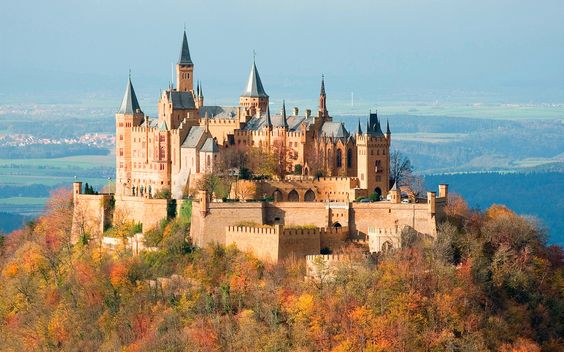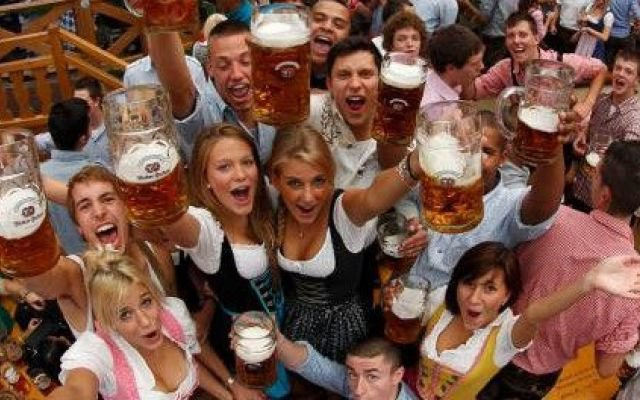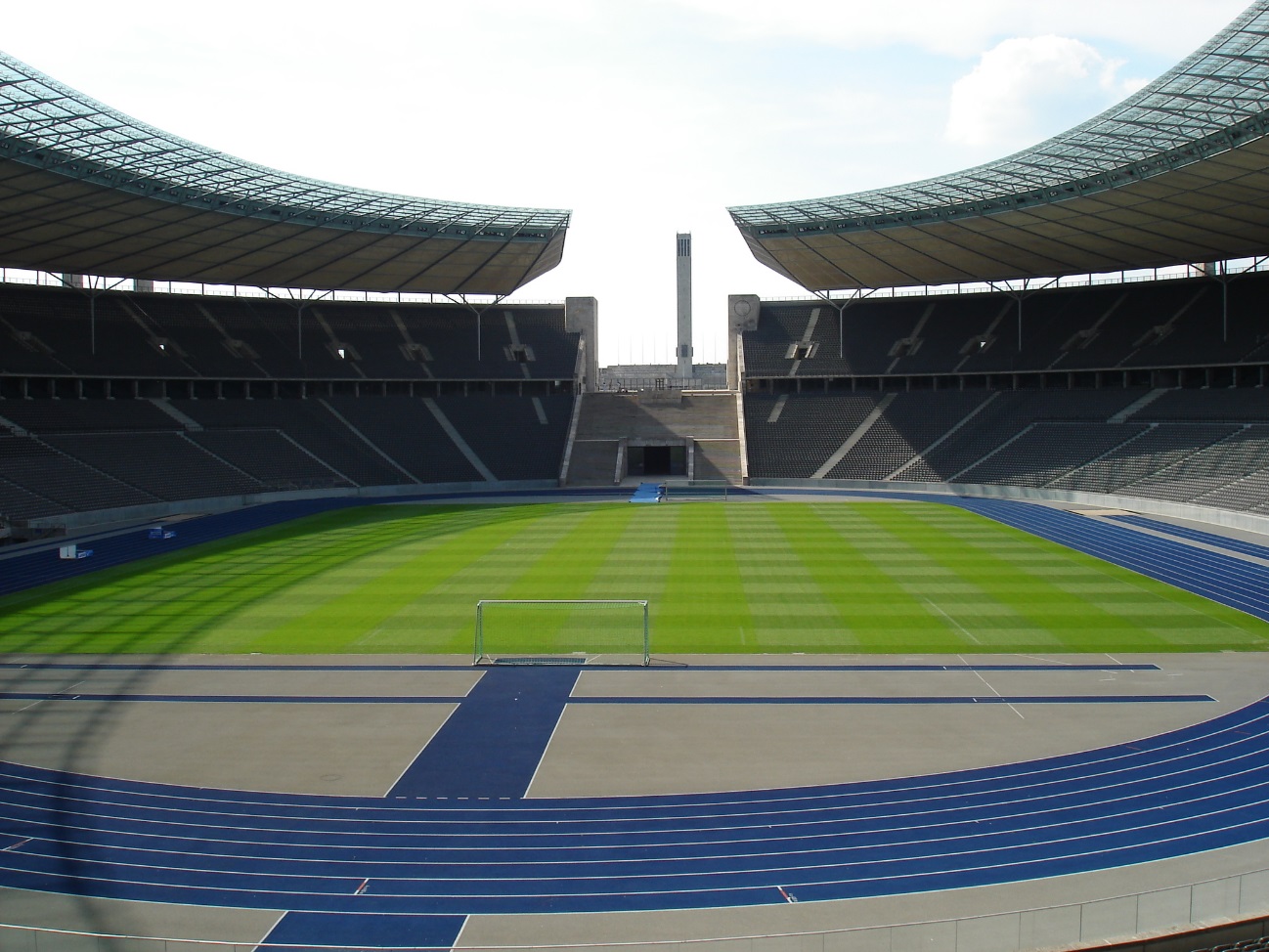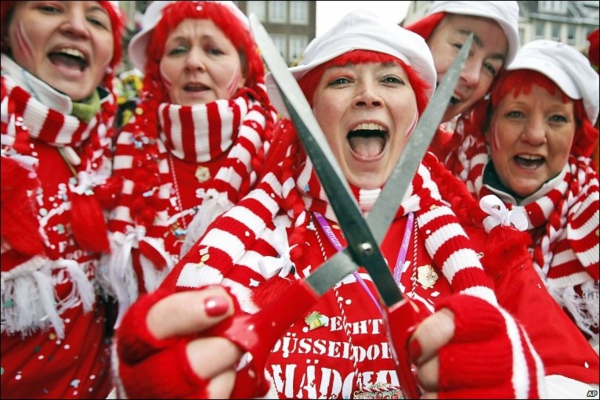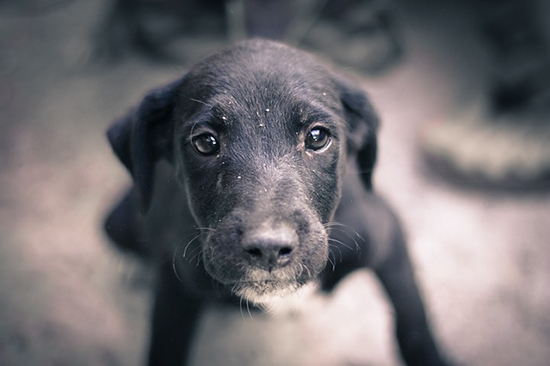Natalie Fröhlich
Today we bring you Germany’s most stunning castles with the guarantee that none of them will leave you cold.
Diana Rodríguez Pretel
With its anti-establishment undertones, the neighborhood of Kreuzberg is rebellious by nature. It is portrayed as one of Europe’s most hipster neighborhoods.
Alba Surís
As a memorable date draws near, we want to commemorate it in a very artistic way. Discover the past by touring the world’s largest open air gallery.
Mónica Boixeda
Oktoberfest Survival Guide
Aurélien González
The 2015 Champions League final will be held in Berlin this coming June 6th, pitting Barcelona and Juventus FC up against each other in what will no doubt be a titanic clash of styles; the touch of the Blaugrana against that that of the Vecchia Signora. A dizzying array of soccer stars face to face in one of the most important matches of the year: Neymar, Messi, Iniesta, Buffon, Pirlo, Pogba… Who among them will seal the fate of this final? And here is our survival guide for those of you traveling to the German capital to support their team… At the Airport: If landing at any of Berlin’s airports (Berlin-Schönefeld or Berlin-Tegel), you’ll be wanting to get downtown nearby the Olympic Stadium as soon as possible, which is most possibly also the area you’ll be staying at. If you are landing at Berlin-Tegel airport, don’t bother trying to find a train- the city center is a mere 8km ride away, and your only options are buses or cabs. If you are landing at Berlin-Schönefeld, your choices will include trains, buses, or cabs. Transport: The easiest way to get to the stadium is to take the S-Bahn or U-Bahn train, although you could also get there by bus. Berlin’s public transport network is exceptional; there’s no way you can go wrong! Your Apartment: A bit of rest before giving your team your all never hurt anyone. Have you had a look at our Berlin apartments? You’ll feel right at home. Time to Eat: Forget your everyday grub! Berlin is the place for wurst, potatoes and sauerkraut. And all that...
Maike Radermacher
The Thursday before Carnival, which is called Weiberfastnacht, is practically an unofficial holiday in the Rhineland in Germany. Starting at noon everybody leaves work and puts on a costume to go out in the bars and streets to celebrate. The strange custom on this day is that it is customary for women to cut the men’s neckties. Where does this tradition come from? We’ll tell you. The origin of this tradition comes from Bonn-Beuel, a village near Cologne. In 1823, the first street carnival took place here. The men celebrated like crazy in the streets while the women stayed at home. Meanwhile, the laundry women of the village of Bonn-Beuel organized a tea party and hatched a plan to fight for their participation in the carnival, which until then was only for men. In 1824 the women founded the “Old Committee of Ladies” which was the basis of the Weiberfastnacht. In 1957 the emancipatory liberation took place. Women stormed the village hall and symbolically placed themselves in charge of the city for one day. The symbolic takeover of the City of Beuel by the laundresses and their committee of ladies is still shown on television. So this custom is known throughout Germany, and the takeover of the town halls by women dressed in colorful costumes is still a tradition in many cities and towns in the Rhineland. After World War II, women began cutting the men’s tie; in Bonn the secretaries cut their bosses’ ties, which were usually very expensive. The tie was regarded as a symbol of male power, since it’s a piece of clothing that is exclusively...
Diana Rodríguez Pretel
The only things you’ll need are a checkered blanket, a basket full of sandwiches, and a thermos to have your own picnic. In this post, we recommend favorite spots of the “weekenders” in Berlin. Tempelhof, Viktoria, and Tiergarten are some of the green gems that this city has to offer. photo source: midwestliving.com Tempelhof Park is one of the most interesting green spaces in Berlin due to its long history. It used to be an airfield, and was a symbol of the city in World War II, but has now been converted into a park. Back in the day, it was a strategic point for allied aircraft to deliver supplies. It closed its doors, however, in 2008. These days, youth and families from all corners of Berlin flock here every weekend to get in touch with nature in the middle of the metropolis. If it is very sunny, which is unusual, it is advisable to bring an umbrella, since the main concourse was an old airport runway and provides little shade. Viktoria Park is one of the fashionable parks in Berlin. It serves as a meeting place for many, where people sunbathe and play sports, including tai chi and soccer. There are also tables where you can have a picnic with your family, partner or friends. Everyone likes to lie in the sun here, since the sun’s rays are sometimes absent and therefore, sought-after by Berliners. It is very common for people to arrive by bike. Usually these are leaning onto trees or lying in the grass. From here, you can also visit Kreuzberg, a hill...
Aleix G. William
A – Alexanderplatz. The heart of the city, this square was named in honor of Tsar Alexander I in 1805, which is when he visited the city. The train and metro station is one of the busiest on its square you’ll find the World Clock and TV Tower as well as several shops and restaurants. Locals refer to as ‘Alex’. B – Brandenburger Tor. The Brandenburg Gate is probably the most iconic landmark of the city. It was built in the late 18th century by the Prussian King Friedrich Wilhelm II as a symbol of peace. Today it is a place of celebration for modern-day Berliners, from the fall of the Wall to the New Year. C – Currywurst. Don’t leave Berlin without having tried currywurst, a grilled sausage that is cut into pieces and served with ketchup topped with curry powder, sometimes eaten with a roll. They sell it in several places at stands on the street so you can eat it on the go. D – Division. Berlin was a city divided by a wall for 38 years, during which West Berlin was part of capitalist West Germany and East Berlin was part of communist East Germany. The wall erected in 1961 divided families and friends for nearly four decades, during which time it was difficult or impossible to visit one another. E – East Side Gallery. It is the name given to a part of the Berlin Wall that is still standing. It’s called ´gallery´ because the wall itself is decorated with artistic works by a variety of artists. A must-see stop. F – Fernsehturm. Which...
Aleix G. William
N – Neukölln. One of the emerging areas of the city, this is where you can find a mix of student life and art as well as the decline this neighborhood suffered after the fall of the Wall. Neukölln is definitely the coolest place in Berlin right now. O – Olympiastadion. The Olympic Stadium, which is located on the outskirts of the city, maintains its imposing structure and is characteristic of Nazi architecture. Built for the 1936 Olympics, this is the place where Jesse Owens won four gold medals in front of Adolf Hitler. Today the field is primarily used for soccer matches and is home to Hertha Berlin. P – Potsdamer Platz. Destroyed in World War II , today Potsdamer Platz is once again one of the city’s hubs, as it was in the 20s and 30s. Featuring high and ultra-modern glass buildings, it is one of major intersections in Berlin and contains one of the oldest traffic lights. There are also remains of the Wall there. It’s well worth a visit. Q – Qdamm. Kurfürstendamm is a shopping street that’s shortened to KuDamm or, even shorter, Qdamm. This avenue lined with trees is full of shops, restaurants and hotels, so it’s perfect for a day of shopping and eating, with its dozens of restaurants of different cuisines. R – Reichstag. The seat of the German Parliament, the Reichstag is the building that symbolizes German executive power. It was built in the late 19th century in a neo-Renaissance style and was burned in the 30s by the Nazis and destroyed during World War II. Now rebuilt, it features...
Diana Rodríguez Pretel
One of the most common handicaps when traveling is a pet, since they are usually not allowed in hotels, nor in cafes, shops, theaters, museums, or even aboard some planes. Sightseeing with a dog or a cat is easy if you have accommodations, if not it’s better to leave them with a family member or board them. Pixabay, by Alexis Are you thinking, “Not without my pet!”? No problem! In Berlin there are alternatives, from airlines that allow pets to stores that don’t make you make you tie your dog up outside in the freezing cold. The dog is in fact a customer in most shops in the German city of Berlin. Air Berlin provides one of the clearest examples of animal tolerance. Some airlines simply don’t accept dogs and cats, in others they may travel in the hold, and some like this one allow dogs under 6 kilos to travel with their owners in the cabin. And bigger dogs don’t travel in the hold but in compartments especially for them. Of course, there are exceptions. Animals are not allowed flights departing to and from the UK. And you will need to have all their documents with their shot records, since you may need to show them at your destination. Interestingly, there’s an airline called Pet Airways that takes this idea much further. This U.S. airline, which was designed exclusively for the transportation of pets, was the first to move forward. The big difference is that with them the animals travel alone, without their owners. It is mostly used for relocating puppies to their new homes. During the flight...

 English
English Français
Français Deutsch
Deutsch Italiano
Italiano Español
Español